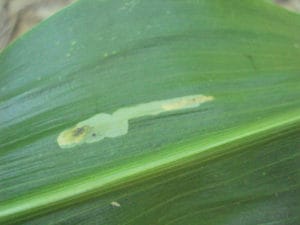Cornucopia’s Take: Pesticides have had their turn at trying to keep the corn rootworm at bay, resulting in their eventual development of resistance to the chemicals. Scientists and some farmers are now inviting predators into their fields to finish the job.
Bugs, fungi, and nematodes deployed to battle corn rootworm
Food & Environment Reporting Network
 |
Source: MU Extension 417 |
Researchers are turning to natural solutions like nematodes, spiders, and cover crops to fight the notoriously destructive rootworm in corn crops. “Western corn rootworm has evolved resistance to nearly every chemical and biotech tool deployed against it in the past few decades,” including Monsanto’s genetically modified Bt corn, says The Progressive Farmer.
Originally developed by Monsanto in 2003, Bt corn was genetically modified to produce the soil bacteria Bacillus thuringiensis, which the company promised would kill key pests, including rootworm. However, almost from the very start, Monsanto had evidence that rootworm was developing resistance to the bacteria.
“Stonewalling by Monsanto delayed what might have been an effective action to slow the spread of resistance, but would have likely come at the cost of reduced sales of Monsanto’s expensive seed,” says Civil Eats. In 2011, resistance was indeed confirmed. And scientists have struggled to defeat the insect ever since.
But now, researchers think Mother Nature may have a solution. Early tests by Cornell University entomologist Elson Shields have shown that nematodes—tiny worms in the soil— are just as effective as the bacterium in genetically-modified Bt corn at killing rootworm. Encouraged by nematode research, Monsanto is sponsoring its own research on them in the Midwest with the help of USDA scientists in Columbia Missouri. Meanwhile, Jonathan Lundgren, an independent agroecologist and entomologist, who has spent more than a decade on the rootworm problem, is experimenting with cover crops as a way to provide habitat for rootworm predators like spiders, ants and centipedes.


 Follow Us
Follow Us Like Us
Like Us